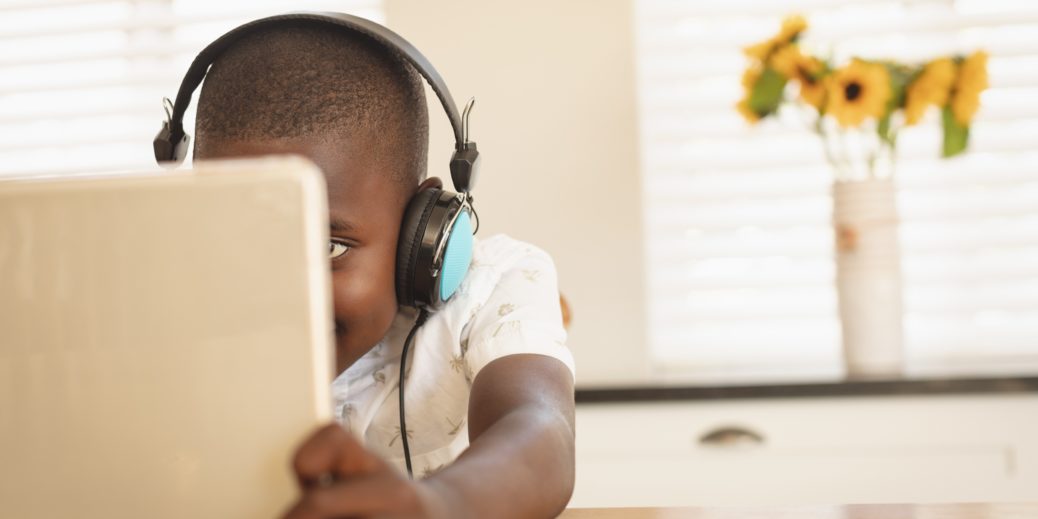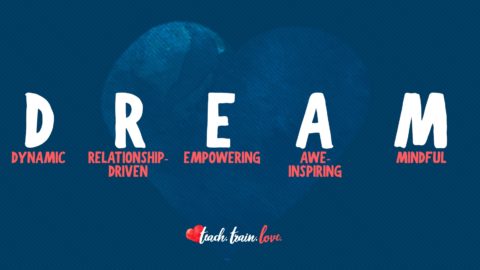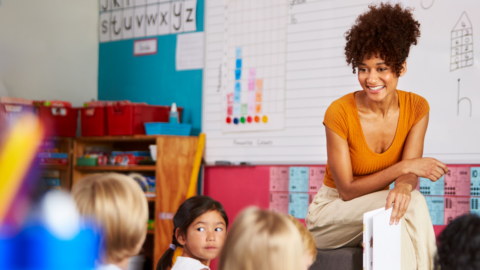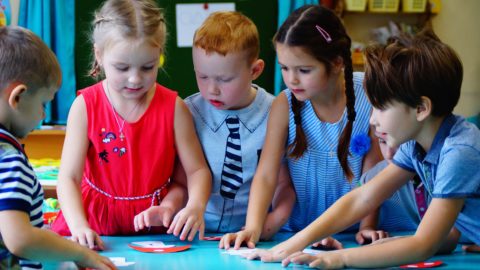The COVID-19 crisis has turned children’s worlds upside down. Our students are coping with a wide range of stressors, and as educators, we of course want to do our part to keep them physically and emotionally safe. To help them navigate these uncertain times, school divisions across the nation are placing a premium on social-emotional learning (SEL) for the 2020-2021 school year.
As CASEL explains, “SEL offers a powerful means to explore and express our emotions, build relationships, and support each other.” It is foundational to creating happy, healthy learning environments. As we continue virtual learning, it’s vital that we prioritize students’ mental health and well-being while cultivating the not-so-soft skills needed to push through this pandemic (and beyond).
So, here’s a compilation of 25+ virtual SEL activities centered around CASEL’s Five Core Competencies: self-awareness, self-management, social awareness, relationships skills, and responsible decision-making. These activities can be tied to content, embedded throughout instruction, or utilized during Responsive Classroom morning meetings or advisory meetings.
Self-awareness
- Mindful Minutes: Mindfulness practices increase students’ self-awareness while teaching them to be fully present. Dedicate a few minutes each asynchronous or synchronous session for students to engage in “Mindful Minute” exercises. See this article 25 Mindfulness Activities for Children and Teens for a wealth of ideas. Home environments can be distracting, but these intentional practices train students’ brains to focus/refocus while nurturing physical and mental health.
- Characterize Me: Give students the special assignment of asking a family member, friend, and acquaintance (such as classmate they don’t know very well) to describe them using 3-5 words from this positive character traits list. Have them share their revelations via discussion board or breakout rooms with peers. Sometimes students don’t recognize their own strengths or how they’re perceived by others. This is a great confidence builder, too!
- The Feelings Wheel: It’s important for students to learn how to name their feelings. Provide them with opportunities to interact with The Feelings Wheel created by Dr. Gloria Willcox. It contains six core feelings (happy, sad, disgusted, angry, fearful, bad, surprised) and expands outward into two more rungs that further specify these emotions. Consider taking a temperature check of students’ current moods at the start of class either in the chat box or via private message to you. Display it to students as they engage in a digital quick-write tied to their feelings about the pandemic using SlidesMania. Or, if a specific student is stuck in a negative emotion (and is ready to talk it out), have them identify a positive feeling on the opposite side of the wheel. Then, help them brainstorm steps to get there. Also, check out this simplified feelings poster best suited for younger learners.
- The Messy Middle: Success is messy. It hardly ever travels on a straight line. Show students this graphic to illustrate this idea. Then, have them privately consider ways they’ve pivoted during this pandemic or other challenging times in their lives. This promotes self-efficacy.
- Visualizing Post-Pandemic Self: Have students consider the valuable life lessons this pandemic is teaching them. Acknowledge the hardships, but encourage positivity. When this is all said and done, do they think they’ll be stronger? More responsible? More appreciative? Have them share their thoughts into a live word cloud generator such as Mentimeter. This will get them thinking more deeply about this experience and how they can grow from it. There is real power in visualization!
Self-Management
- Bridges and Barriers: During the initial planning stages of goal-setting, have students consider potential bridges (who else/what else can help them achieve their goal) and barriers (potential obstacles they may face). Here’s a Google doc organizer to assist with ideation.
- THINK Before You Post: Given students’ increased use of technology, it’s a good time to discuss digital citizenship. Have them engage with this THINK infographic for kinder and more effective communications. Would their last 10 posts pass the THINK test?
- Back to Zero: There is still great value in reading books aloud to students regardless of age, virtual or not. Dr. Joy’s newly published picture book, Back to Zero, provides many easy-to-implement strategies to help students (and even adults) de-escalate when experiencing BIG emotions.
- Color Their World: Students need plenty of screen-free activities! Coloring alleviates stress while giving them time to hone their fine motor skills. Print/mail a packet of coloring book pages along with a set of crayons, markers, or colored pencils to each student. If school funds are low, give DonorsChoose.org a try! See the variety of free coloring pages Crayola offers for students of all ages here.
- Old School Games: Popular childhood games like Simon Says or Freeze Dance can be pretty amusing to do virtually when the whole group needs a brain break. They also help children practice self-control.
Social awareness
- Facing Race: Lean into developmentally appropriate conversations with students about race, racism, and racialized violence. Here’s a comprehensive list of resources for ideas.
- Empathy Map: When studying characters or influential figures, have students complete an empathy map such as this. It will lead to deeper learning while teaching students how to sense and better understand other people’s emotions and perspectives. For younger students, a simple four-square with the words says, thinks, does, and feels should do the trick.
- Cultural Show-and-Tell: Have students show and tell about an artifact tied to their cultural heritage via Seesaw or Flipgrid to honor diversity.
- Write to Connect: Writing is a great way to connect students to the world around them, especially since so many are feeling disconnected. During a pandemic, there are plenty of people or organizations who could use words of encouragement and support. For example, have students write/decorate handwritten or digital letters to elders at a local senior center, as some are experiencing loneliness. Check out the Write On Campaign dedicated to connecting people through writing.
- Do Good: Help students discover their philanthropic interests. Here’s a wonderful Map your Heartbreak activity that helps students discover their giving passion(s).
Relationships Skills
- Gamify in Groups: Create a Kahoot, Gimkit, or Quizziz tied to learning objectives for students to play together in small-group breakout rooms. This is a fun, exciting way to promote effective communication and teamwork.
- EduBlogging: If you teach reading/writing, have students create their own personal blogs in place of composition writer’s notebooks. Let them write about interests and topics of choice often. Edublogs can be easily shared with peers. They promote social engagement, as students can share thoughts/feedback in the comments section.
- Cooperative Roles: Assign a task for students to complete as a team using breakout rooms. Give team members a specific responsibility. For example, you could assign a student the role of chat facilitator who guides the dialogue, word processer who enters the responses on the deliverable piece, time keeper who monitors the group’s pace, speaker who shares resonating thoughts to the whole group afterward, etc. This teaches individual and group accountability.
- Special Interest Groups: Create a Google doc or Padlet with several interests listed (such as sports, the outdoors, animals, art, travel, etc.) and have students write their names under the most appealing category. Then, send them out to breakout rooms to further discuss. Finding ways to help students form connections is key, especially in the virtual setting.
- Been There, Done That: Sooo…I actually just wrote a blog post with 33 ideas for building relationships in the virtual setting. Check it out here!
Responsible Decision-Making
- Broken Escalator: Watch this clip to launch a discussion about problem-solving. Have students identify the obvious solution. Then, in the chat box, let them brainstorm as many creative, outlandish ways that the two people could have gotten off the escalator instead. Afterward, ask them if they’ve ever gotten angry, sad, or frustrated and felt stuck in that emotion. How did they pull themselves out of it? Circle back to the video, reminding students that sometimes all we have to do to solve a problem is take the first step.
- 3-2-1 Exit Ticket: Use this simple exit ticket at the close of any lesson to encourage self-reflection while promoting self-driven, real-world application.
- Our Three Brains: When faced with tough decisions, have students reflect on their problem-solving tendencies. Teach them about their “three brains.” Do they tend to react (with their gut), feel (with their heart), or think (with their brain)? Recognizing these dispositions can help them make more informed decisions.
- Making Tough Choices with Kid President: Show students this video from Kid President. Create a Padlet. On one side, have students list examples of being a follower. On the other side, have them list examples of being someone worth following. Have them reflect on how their choices contribute to the world.
- Better Brainstorming: Pose a problem and have students brainstorm as many solutions as possible in the chat box or in Socrative using the Quick Questions, Short Answer option. Then, have students consider the SODAS methodology for problem-solving to vote on the best ideas.
I hope these thoughts and resources help! As you’re tending to students’ social-emotional needs, please set aside time to be good to you, too. Self-care is essential, now more than ever. It matters, and you matter!
Want more on virtual learning? See my posts Virtual Learning: 20 Structures for Small-Group Instruction, Virtual Learning: Maybe We ARE Prepared For This, Virtual Learning: 13 Tips for Zoom Breakout Rooms, Virtual Learning: 33 Ways to Build Relationships, and Virtual Learning: 10 Best Practices for Parents.









